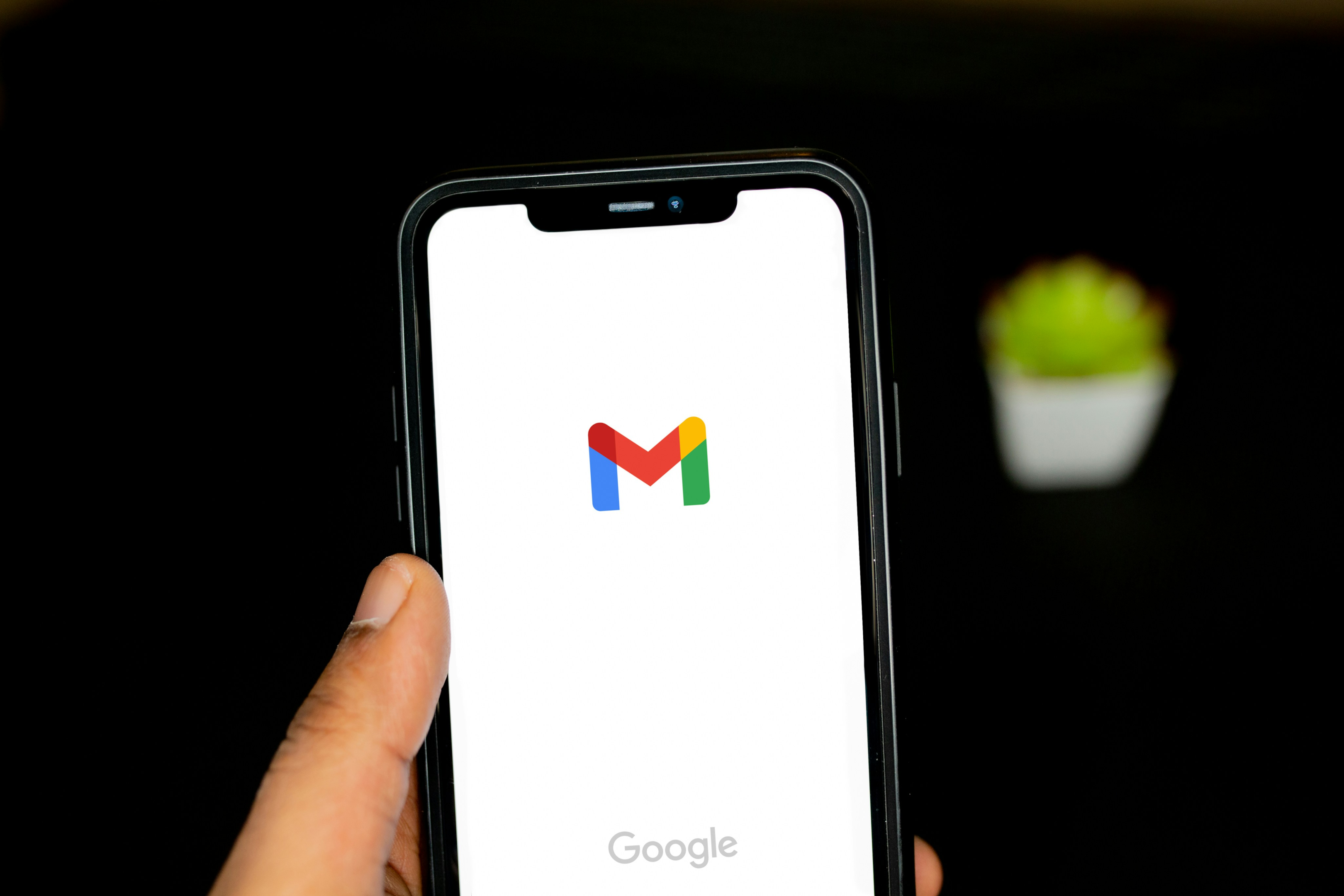
Looking to navigate the world of Gmail ads? This guide provides a no-nonsense approach to creating, managing, and optimizing your Gmail ads for maximum business impact. Learn how to seamlessly integrate ads into user inboxes, control your costs, and track key performance indicators to ensure the success of your campaigns.
Key Takeaways
Gmail ads are interactive ads in the inbox that can expand upon being clicked, designed to blend in with users’ emails and pay-per-click pricing allows advertisers to control their spending budget.
Advertisers can measure campaign effectiveness through performance metrics like CPC and CTR, and optimize through strategies like refining targeting and testing ad variations to maximize engagement.
Advanced targeting methods using demographics, interests, and keywords help advertisers reach specific audiences, and managing campaigns through Google Ads interface provides a user-friendly experience for setting up and optimizing Gmail ad campaigns.
Understanding Gmail Ads and Their Placement
What exactly are Gmail ads? Well, they’re specially served to users with free accounts, appearing at the top of the promotions tab or Social tabs within the inbox. Just like an email chameleon, they mimic the format of an actual email, blending in with your regular email flow. But they aren’t just pretending to be emails. They’re interactive! Click on them, and they expand to reveal:
a headline
a description
an image
a call-to-action button.
But how do these Gmail ads end up in your inbox, you ask? The placement of these ads is determined by a match between the keywords chosen for the ad campaign and the content present in your emails. It’s like having a personal shopper pick out your ads!
The Journey of an Ad into Your Inbox
Creating a Gmail ad is an art and a science. Advertisers need to provide:
A headline (25 characters max)
A description (90 characters max)
Their business name
A landing page
It’s like a mini billboard, right there in your inbox! After creating the ad, advertisers launch their campaign by clicking ‘Create Campaign.’ The ads are then sent for approval, kind of like applying for a visa to enter your inbox.
Once approved, they get placed alongside your regular emails, waiting for you to discover them.
Visibility Among Emails: How Gmail Ads Stand Out

So, how do Gmail ads stand out among your usual email traffic? The secret lies in their design. Gmail ads are designed to initially appear as collapsed ads, blending in with your email flow. They’re like that quiet person at a party who’s full of interesting stories. You just need to engage with them.
Once you click on a collapsed Gmail ad, it expands to the size of a full email, revealing a more detailed and engaging user experience. It’s like an introvert coming out of their shell, offering you an engaging, interactive experience.
Breaking Down the Cost Structure of Gmail Ads
Now let’s talk money. Gmail ads utilize a pay-per-click (PPC) advertising model, which merges features of traditional email marketing and paid ads. In simple terms, the advertiser pays each time a user engages with their ad by clicking on it.
The good news? Advertisers can manage their spending on Gmail ads campaigns via their Google Ads account budget, all through their Gmail account. This means you have the control to decide how much you want to spend on your ad campaign. It’s like having a prepaid phone plan for your ads. You only pay for what you use, and you get to control your spending.
Pay-Per-Click Pricing Explained
So, how does this pay-per-click pricing model work? Advertisers have the option to bid for ad placement on Gmail either manually, setting each bid individually, or automatically, with Google setting bids to target specific ad placements within budget constraints. Think of it like an auction, where you decide how much you’re willing to pay for a click on your ad. By adjusting their maximum cost-per-click bids, advertisers can influence the amount of traffic they receive and the return on investment for their Gmail ad campaigns. It’s like tweaking the volume knob on your radio. Turn it up for more traffic, turn it down to save costs.
A higher click-through rate leads to a lower cost-per-click for Gmail ads, while a lower click-through rate would typically increase the cost-per-click. The selected bidding focus, such as aiming for conversions, should be aligned with the advertiser’s campaign goals to effectively meet specific business objectives. Google also provides options for advertisers to enable or disable their Gmail ads from showing when emails contain keywords targeted by their campaign. This gives you the control to decide when and where your ads appear.
Budgeting for Your Gmail Ad Campaign

Budgeting is an essential part of any ad campaign. With Gmail ads, you can:
Set and adjust an average daily budget at any time, allowing you to control ad spend based on your overall campaign goals
It’s like having a speed limit for your ad spend
Google Ads may occasionally spend more than your set daily budget, but safeguards are in place to prevent monthly costs from exceeding the calculated monthly budget.
For an effective campaign launch, it’s recommended to start with a conservative budget for Gmail ads, using standard delivery and implementing frequency capping to control cost and exposure. It’s like starting a road trip with a full gas tank and a clear map.
Measuring the Effectiveness of Gmail Ads
Now that we’ve covered the journey of the ad and its cost structure, let’s move on to measuring the effectiveness of Gmail ads. Key performance metrics for Gmail ads include:
Cost-per-click (CPC)
Click-through rate (CTR)
Impressions
Gmail Forwards
Gmail Clicks to Website
Gmail Saves
Think of these metrics as your compass, guiding you towards your campaign goals.
Conversion tracking is crucial in evaluating the success of Gmail advertisements by measuring user actions that lead to valuable customer activity. It’s like tracking the breadcrumbs left by your users, leading you to valuable insights about your ad performance.
Key Performance Indicators (KPIs) for Gmail Ads
Key Performance Indicators (KPIs) are essential in evaluating the success of Gmail ads. KPIs should be selected based on:
Business goals
Data availability
Industry benchmarks
Testing different metrics
It’s like picking the right tools for a job.
For example, an average open rate of up to 6.6% serves as a benchmark for Gmail ads effectiveness. This gives you a standard to measure your ad performance against, ensuring you’re on the right track.
Strategies to Optimize Gmail Ad Effectiveness
To optimize the effectiveness of your Gmail ads, consider using strategies like:
Audience segmentation
Refining targeting
Crafting effective subject lines
Testing ad variations
It’s like fine-tuning a musical instrument to achieve the perfect sound.
Employing customer match lists using existing customer databases can significantly increase the precision of your Gmail ad targeting. Think of it as a VIP list for your ads, ensuring they reach the right people. Refining ad targeting can involve utilizing detailed demographic data, exclusion strategies, or customized bids for specific demographic segments.
Crafting an effective subject line is crucial as it influences the likelihood of ad engagement. It’s like the headline of a newspaper article, the first thing that catches the reader’s attention. Testing different ad creatives and targeting methods, iterating the approach based on insights from ad performance metrics, can identify the best performing elements for optimization. It’s like trying out different recipes to find the perfect dish.
Crafting Compelling Gmail Ads

So, what are the ingredients of a compelling Gmail ad? Here are some tips:
Utilize a concise and conversational style
Use preheader text for additional detail
Include relevant emojis in the subject line
Include a clear call to action to increase the chances of ad engagement
It’s like writing a catchy song, where every word matters.
Ensure you have adequate, on-brand imagery that aligns with the offer promoted within your Gmail ads. It’s like choosing the right outfit that reflects your personality. Craft expanded Gmail ads like landing pages by incorporating optimized calls to action and imagery designed to capture attention from users.
Finally, to provide a seamless and pleasant user experience, make sure to:
Ensure that the Gmail ad content matches the landing page
Make the transition from the ad to the landing page smooth
Meet the expectations set by the ad
It’s like guiding a guest from the front door to the living room, providing a seamless and pleasant experience.
Designing Ads That Resemble Actual Emails
Designing Gmail ads that resemble actual emails involves a few key strategies. Adopting a conversational tone in subject lines and personalizing them with specific information such as location or interests can increase the relevance and engagement of Gmail ads. It’s like addressing a letter to a friend, making it more personal and engaging.
Ensuring that Gmail ads are visually appealing and maintain brand consistency is critical for keeping user engagement high. It’s like maintaining a consistent theme in a photo album. Gmail ads should be crafted with subtle visuals and balanced text that blend naturally with a user’s email inbox to avoid disrupting their experience.
Offering top-of-the-funnel content such as webinars or educational material in Gmail ads can nurture prospects who are in the awareness or evaluation stage of the buyer’s journey. It’s like offering appetizers before the main course, preparing your customers for what’s to come.
Leveraging Visuals and Copywriting Techniques

Enhancing Gmail ads with visuals and copywriting techniques is an essential part of crafting compelling ads. High-quality images in Gmail ads are crucial for effective brand message communication. Think of it as choosing the right visuals for a presentation. Advertisers need to ensure images are not:
blurry
color-inverted
overly filtered
visually skewed
to avoid diminishing the ad’s professionalism. It’s like avoiding a bad hair day in your profile picture. Tools like Google Ads Editor are available to help incorporate impactful visuals smoothly into Gmail ads.
Gmail ad copywriting should be clear and compelling, leveraging headlines and descriptions that resonate with the target audience. It’s like writing a compelling narrative that keeps the reader hooked. Utilizing engaging visuals and copywriting techniques, such as impactful statistics, relatable phrases, and organizing information with brackets, can enhance Gmail ads.
Finally, creative and copy testing are essential to ensure that Gmail ads capture attention and communicate the campaign’s unique value propositions effectively. It’s like doing a dress rehearsal before the actual performance, ensuring everything is just right.
Advanced Targeting Methods for Gmail Ads
Advanced targeting methods for Gmail ads can take your ad campaign to the next level. By utilizing the right targeting method, Gmail ads offer a wide range of audience targeting options including Affinity Audiences, In-Market Audiences, and Remarketing Audiences, which enables advertisers to reach specific demographics and interests more effectively. It’s like casting a fishing net with precision, ensuring you catch the right fish. Advertisers can also fine-tune their ad targeting to specific or broad audiences with parameters such as keywords, locations, devices, and the use of remarketing lists. It’s like adjusting the focus on a camera, ensuring you capture the right shot.
For Gmail ad targeting, advertisers have the choice of different levels of automation to apply, ranging from no automation to conservative or aggressive automation. It’s like choosing the right gear for your car, depending on the terrain.
Demographic and Interest-Based Targeting
Demographic and interest-based targeting allows advertisers to reach specific customer segments based on statistical data and online behavior. Advertisers can use demographic targeting in Google Ads to reach potential customers within specific demographics such as:
age range
gender
parental status
household income
It’s like choosing the right audience for a theater performance. Sensitive content categories such as race, religion, and health are not used for targeting Gmail ads to protect users’ privacy. It’s like respecting personal boundaries in a conversation.
Demographic targeting in Gmail ads can be utilized to narrow the audience, ensuring ads are not shown to users outside the selected categories, with advanced options like Detailed Demographics including homeownership and education. In-market audience targeting allows advertisers to reach users who are actively researching or planning to buy specific products or services according to their online behavior. It’s like identifying potential customers who are ready to make a purchase.
Utilizing Keywords and User Behavior Data
Keywords and user behavior data can be utilized to target Gmail ads more effectively. Targeting keywords related to the brand or products can increase the opening rate of Gmail ads. It’s like using the right bait to catch the right fish.
Gmail ads are personalized and shown to users based on their online activity while they are signed into Google. Think of it as a personal shopper who knows your preferences. Advertisers can target their Gmail ads to users who have visited certain domains, including their own website or those of competitors, by using domain targeting features. It’s like keeping tabs on your customers and competitors, ensuring you stay ahead of the game.
Managing Gmail ads is a breeze with the Google Ads interface. Advertisers can serve ads and access the Gmail ads feature by selecting ‘Display campaigns’ followed by ‘Ads & extensions’ from the navigation menu. It’s like navigating through a user-friendly dashboard, proving how Gmail ads work effectively.
Defining a campaign objective is the first step in the process, influencing the available setup options in Google Ads for a targeted outcome with Gmail ads. It’s like setting a destination before starting a journey.
Creating Your First Gmail Ad
Ready to create your first Gmail ad? Here’s how:
Go to the Campaigns tab
Click the blue ‘+’ button
Select ‘Create a campaign without a goal’s guidance’
Choose Display campaigns
Select ‘Gmail Campaign’
It’s like starting a new project on your computer.
Create a Gmail ad by uploading assets like a logo, business name, headline, and description, as well as additional content such as website links or phone numbers. It’s like filling out a profile for your ad.
Ensure the correct campaign structure by following these steps:
Sign in to Google Ads.
Navigate to ‘Display campaigns’.
Click on ‘Ads & extensions’.
Select ‘Gmail ad’ or ‘Upload Gmail ads’.
Use ad groups to cluster related ads.
It’s like organizing your files into relevant folders.
Access budget recommendations for Gmail ads within the Google Ads account, which are based on the campaign’s recent performance. It’s like getting personalized recommendations based on your browsing history.
Managing and Optimizing Your Campaigns
Managing and optimizing your Gmail ad campaigns is the final step in your Gmail ads journey. Shared budgets can be set for Gmail ads which allow spending to be distributed across multiple campaigns, leading to optimization of overall campaign results by Google Ads. It’s like setting a group budget for a group trip.
Advertisers can:
Manage demographic targeting
Access filtered reports for either individual campaign, ad group, or account level
Edit the targeting preferences within Google Ads
It’s like having a detailed report of your journey, helping you make better decisions for the future.
Summary
So there you have it, a comprehensive guide to maximizing your business impact with strategic Gmail Ads campaigns. From understanding Gmail ads and their placement, breaking down the cost structure, measuring effectiveness, crafting compelling ads, to navigating the Google Ads interface, you’re now equipped with the knowledge to take your business to new heights. So why wait? Dive into the world of Gmail ads and start making your mark!
Frequently Asked Questions
How do I stop ads on Gmail?
You can stop ads on Gmail by going to Settings, clicking “See all settings,” then heading to the Labels section and choosing to hide certain tabs like Promotions. Another option is to use an ad blocker for a cleaner, ad-free experience.
What are Google Gmail ads?
Google Gmail ads are personalized and automated ads that appear in the Promotions tab of consumer accounts, showing offers from brands based on your online activity while signed into Google.
Do Gmail ads still exist?
No, Gmail ads are no longer available as standalone ads since July 2021.
Why am I getting so many Gmail ads?
You’re seeing a lot of Gmail ads because that’s how Google supports its free services, like Gmail. The ads are personalized based on your online activity while signed into Google, aiming to show you the most relevant ones.
How is the cost of Gmail ads determined?
Advertisers are charged on a pay-per-click basis for Gmail ads, meaning they pay each time a user clicks on the ad. They can control their spending through their Google Ads account budget.







